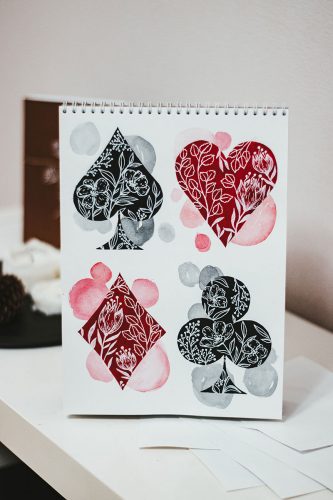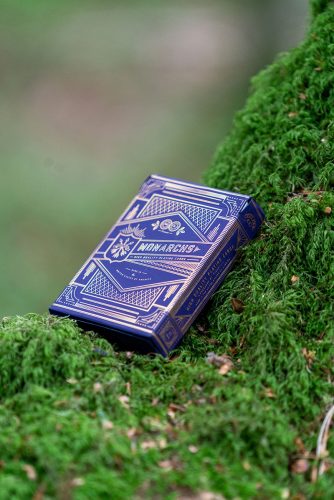
The purpose of a logo is to create a simple symbol that is instantly recognisable and that helps to distinguish your business or product from the crowd. Today, logos are generally associated with corporations but we all have our own personal logo too – our signature. We use it to confirm our agreement to a contract, write cheques, and apply for important government ID documents.
Your signature acts as a differentiator, separating your acceptance, approval, or support from someone else who has a different set of squiggly lines.
From this, we can see that logos come in all shapes and sizes and serve a wide range of different purposes.
There are four symbols that we are all familiar with but which we may not immediately consider to be logos. However, that is exactly what they are! These are the four suits found in a deck of cards, which use red and black icons to make them recognisable and instantly distinguishable from the others.
In games like poker, being able to quickly read the suits and values of all the cards in your hand is important when you’re making decisions under pressure. This is especially true in community games; for example, the rules of Texas Hold’em include several rounds where you can bet (or choose to fold) based on the value of the hand you can make with your own hole cards and those spread on the table. To be able to do this effectively, the card’s logos must instantly communicate what they are worth.
But where did these famous symbols come from?
Ancient Origins
Playing cards can be traced back as far as the Tang Dynasty in China, though there are no surviving records of how games from this era were played. Cards have also appeared in many other civilisations, including India and Persia.
However, it was in 15th century France where modern playing cards were born.
The suits in these French playing cards were designed to mimic the social classes of the time: royalty, peasants, clergy, and merchants. The exact number in the deck varied, though just 20 cards could be found in many decks at the time.
The current 52-card decks that are most commonly found both on sale and in casinos and poker rooms today date back over 150 years and little has changed since then.
For the most part, this is due to tradition, the fact that most modern card games are built around these standard packs of cards, and a general attitude of “if it ain’t broke, don’t fix it”.

Can We Make them Better?
That hasn’t stopped some people from trying to improve the logos which we find on playing cards.
One of the most practical attempts was by Mike Caro, a professional poker player who has written several books about the sport. His idea was to add two more colours to the decks so that each suit had its own one assigned rather than two being red and the other two being black.
In doing this, Caro made it easy to tell what a card was just at a glance. It’s a technique used by businesses right around the world, either using a specific colour to associate their brand with or by creating multiple logos with different colours to differentiate between separate divisions of a single company.
A recent example of this happened when the BBC updated its logo. In the process, it also redesigned the logos for its different services, such as news, sport, weather, and its podcast app. Each one has its own distinct colour, making it easier for users to find the right app on their phones.
Four-coloured decks work to the same effect. In fact, the design became incredibly popular among some players, especially those that enjoyed the game online during the era of smaller screens and more primitive graphics.
However, despite being better, the four-colour deck is yet to take off in a mainstream way.
In Summary
Logos are everywhere, even in places we may not have considered. This includes a 52-deck of cards where four logos are used to distinguish four unique suits from each other. These logos are more than 500 years old and follow principles that are even older; apart from a few minor colour tweaks, there are no real benefits to be gained from changing them.






